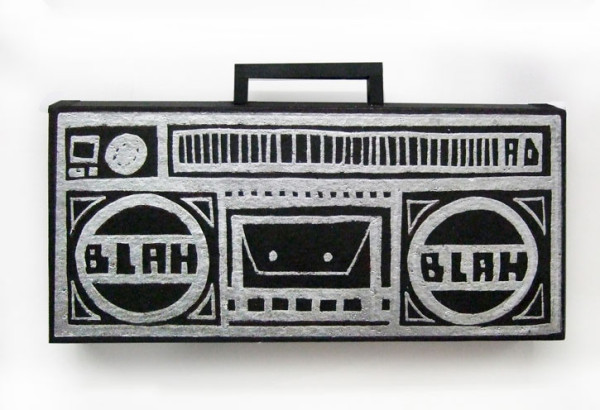022gas_Gasometer Gamestore
En la preparación para el próximo libro el Juego de Arquitectura que pasar las páginas hacia atrás a un proyecto seminal realizado con Gerrit Grigoleit, hoy de P.arc Berlín

179prs_GAME OF FLAGS: Not waving, brand building.
 New Zealand is in the news for reasons other than sport. The country is going through an identity crisis and resolution will be determined, following Scotland and Greece most recently, by public participation. The NZ Government, lead by PM John Keys, is holding a referendum as the country seemingly needs a new flag although this argument for change has been bubbling beneath the cultural landscape, much like a Rotorua mud pool, for some decades now. There are three historic reasons for change: firstly, that the current NZ flag which dates from 1902 appears too similar to the Australian; secondly that the nation considers its colonial heritage as being anachronistic today; thirdly that the flag does not recognise Polynesian indignity.
New Zealand is part of the Open Government Partnership (OGP), a group of countries that seek governance to be more accountable to its citizens. Interestingly, the OGP’s four principles include: transparency, accountability, participation and innovation / technology. The first two principles seem to have been successfully delivered given NZ’s top two rating in Transparency International’s index which consolidates the government’s puerile ‘100% Pure’ brand building / tourism budget. The last two principles are of interest to the Game of Architecture research field: participation and innovation in relation to national identity brand building through the waving of a flag. To facilitate participation in the flag debate, the Flag Consideration Panel asked NZers to share their views and values as well as suggest alternative flag designs. The nationwide engagement programme included:
New Zealand is in the news for reasons other than sport. The country is going through an identity crisis and resolution will be determined, following Scotland and Greece most recently, by public participation. The NZ Government, lead by PM John Keys, is holding a referendum as the country seemingly needs a new flag although this argument for change has been bubbling beneath the cultural landscape, much like a Rotorua mud pool, for some decades now. There are three historic reasons for change: firstly, that the current NZ flag which dates from 1902 appears too similar to the Australian; secondly that the nation considers its colonial heritage as being anachronistic today; thirdly that the flag does not recognise Polynesian indignity.
New Zealand is part of the Open Government Partnership (OGP), a group of countries that seek governance to be more accountable to its citizens. Interestingly, the OGP’s four principles include: transparency, accountability, participation and innovation / technology. The first two principles seem to have been successfully delivered given NZ’s top two rating in Transparency International’s index which consolidates the government’s puerile ‘100% Pure’ brand building / tourism budget. The last two principles are of interest to the Game of Architecture research field: participation and innovation in relation to national identity brand building through the waving of a flag. To facilitate participation in the flag debate, the Flag Consideration Panel asked NZers to share their views and values as well as suggest alternative flag designs. The nationwide engagement programme included:
- a national road show with 25 workshops and hui across the country
- visits to busy shopping malls, libraries and markets
- over 700,000 visits to our websites, and more than 1,000,000 people reached via social media.

179prs_GAME OF TRASHING HOTEL ROOMS
 In response to a recent tweet from Wallpaper*regarding “a boutique hotel with a rocker’s soul”, the writer seems to be acutely unaware of Keith Richard’s interior design skills: televisions lobbed from balconies; Or is it that the omnipresence of aspirational designer lifestyles trumpeted by glossies has meant that even today’s rock ‘n rollers are more concerned about plush furnishings and an ergonomic mattress rather than destroying a hotel room.
Maintaining the increasingly risk adverse, Health and Safety soft rock ‘ n roll chic has it’s natural conclusion: the American Gladiator Bandstand has a ‘Battle of The Bands’ whereby the competition is not musical, rather architectural: hotel room thrashing.
In response to a recent tweet from Wallpaper*regarding “a boutique hotel with a rocker’s soul”, the writer seems to be acutely unaware of Keith Richard’s interior design skills: televisions lobbed from balconies; Or is it that the omnipresence of aspirational designer lifestyles trumpeted by glossies has meant that even today’s rock ‘n rollers are more concerned about plush furnishings and an ergonomic mattress rather than destroying a hotel room.
Maintaining the increasingly risk adverse, Health and Safety soft rock ‘ n roll chic has it’s natural conclusion: the American Gladiator Bandstand has a ‘Battle of The Bands’ whereby the competition is not musical, rather architectural: hotel room thrashing.

 All we hear is Radio Blabla…
All we hear is Radio Blabla…


